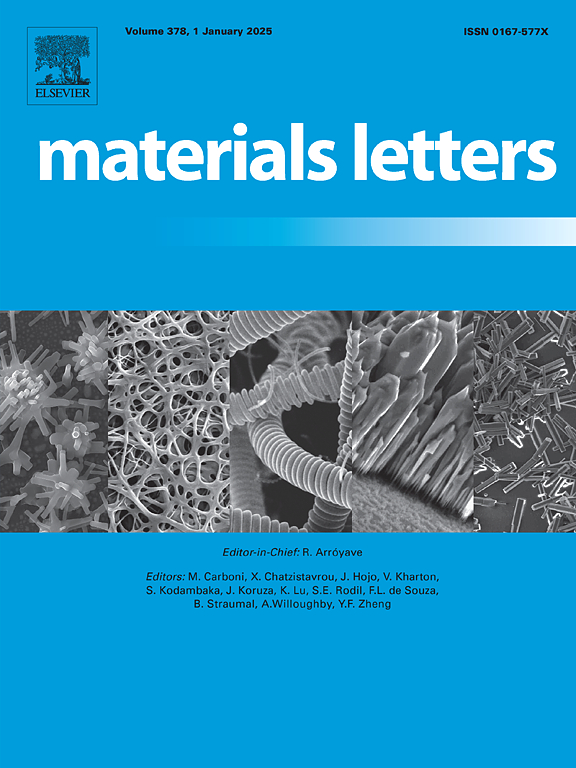Synthesis of magnetite nanoparticles by reduction in two different solvents
IF 2.7
4区 材料科学
Q3 MATERIALS SCIENCE, MULTIDISCIPLINARY
引用次数: 0
Abstract
Magnetic nanoparticles (MNPs) have been studied in the last decades due to their properties and applications, acting as heating agents in magnetic hyperthermia or analytes detection, to mention a few. We developed magnetite (Fe3O4) MNPs capable of accomplishing previously mentioned applications. When stimulated with an alternating magnetic field (AMF), our particles reached a temperature increment of 9 ⁰C after being stimulated for 12 min. Also, they served as a peroxidase-like agent for H2O2 detection, reaching a limit of detection of 5 × 10−6 M. Our MNPs were synthesized by chemical reduction method using iron salts as precursors and octadecylamine as the reducing agent under a nitrogen atmosphere, in water or ethylene glycol. MNPs were characterized by X-ray diffraction, confirming their cubic spinel structure, and scanning electron microscopy analysis showed an average particle size of 35.0 and 34.0 nm; vibrating sample magnetometry was used to analyze their magnetic properties, and UV–Vis spectroscopy to determine the Fe content of MNPs. The synthesis method here presents good reproducibility of MNPs with a moderate size distribution.

求助全文
约1分钟内获得全文
求助全文
来源期刊

Materials Letters
工程技术-材料科学:综合
CiteScore
5.60
自引率
3.30%
发文量
1948
审稿时长
50 days
期刊介绍:
Materials Letters has an open access mirror journal Materials Letters: X, sharing the same aims and scope, editorial team, submission system and rigorous peer review.
Materials Letters is dedicated to publishing novel, cutting edge reports of broad interest to the materials community. The journal provides a forum for materials scientists and engineers, physicists, and chemists to rapidly communicate on the most important topics in the field of materials.
Contributions include, but are not limited to, a variety of topics such as:
• Materials - Metals and alloys, amorphous solids, ceramics, composites, polymers, semiconductors
• Applications - Structural, opto-electronic, magnetic, medical, MEMS, sensors, smart
• Characterization - Analytical, microscopy, scanning probes, nanoscopic, optical, electrical, magnetic, acoustic, spectroscopic, diffraction
• Novel Materials - Micro and nanostructures (nanowires, nanotubes, nanoparticles), nanocomposites, thin films, superlattices, quantum dots.
• Processing - Crystal growth, thin film processing, sol-gel processing, mechanical processing, assembly, nanocrystalline processing.
• Properties - Mechanical, magnetic, optical, electrical, ferroelectric, thermal, interfacial, transport, thermodynamic
• Synthesis - Quenching, solid state, solidification, solution synthesis, vapor deposition, high pressure, explosive
 求助内容:
求助内容: 应助结果提醒方式:
应助结果提醒方式:


